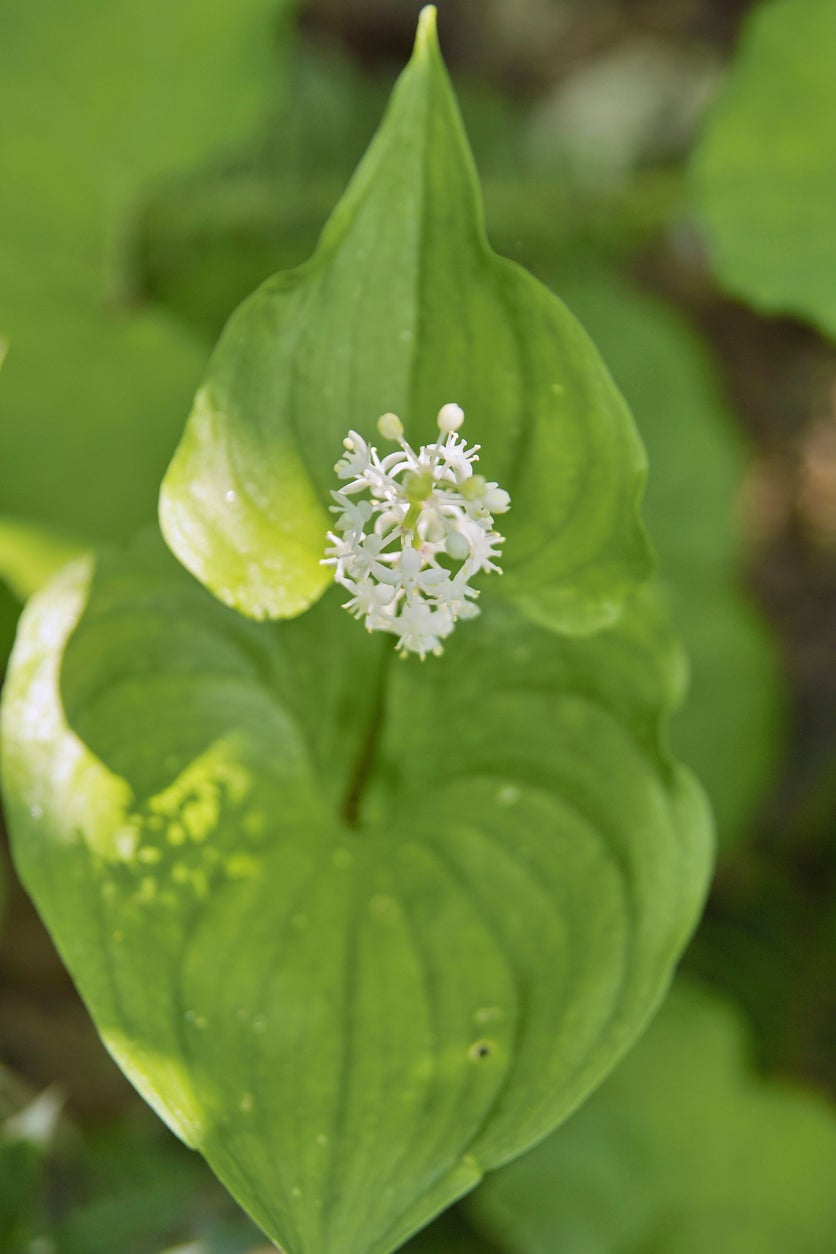Wild Lily Of The Valley Care – How To Grow False Lily Of The Valley Plants


You’ve heard of lily of the valley from the childhood rhyme, if nothing else. What about false lily of the valley though? According to false lily of the valley facts, the plant is a native perennial also called wild lily of the valley flowers (Maianthemum dilatatum). For more information about this plant, including tips on how to grow false lily of the valley, read on.
False Lily of the Valley Facts
False or wild lily of the valley is a low-growing perennial native to the Pacific Northwest. It has big glossy leaves. They are heart-shaped and grow on long stalks. The flowers are white and tiny. Each flower has four tepals, four stamens, and a two-parted ovary. The plant blooms in late spring and summer.
How to Grow False Lily of the Valley
If you are interested in learning how to grow false lily of the valley, it is a bit complicated but entirely doable. Wild lily of the valley care starts with finding a good planting spot.
These plants often grow in moist, shady woods and streambanks in the wild, much like their namesake. That means that the best planting bed will be an area that is cool and shady, with moist, but not wet, soil.
Wild lily of the valley flowers grow in sand, loam, or clay and any pH – from acidic to neutral. However, they will do best when the soil is rich in organic matter.
Wild Lily of the Valley Care
You can grow false lily of the valley flowers from seeds or cuttings.
If you opt for seeds, let the seedlings stay in a container for the first year or so. False lily of the valley plant care for the potted seedlings includes feeding them with diluted liquid fertilizer. Do this regularly to give them the nutrition they need.
Gardening tips, videos, info and more delivered right to your inbox!
Sign up for the Gardening Know How newsletter today and receive a free copy of our e-book "How to Grow Delicious Tomatoes".
Alternatively, you can grow false lily of the valley flowers from rhizomes, the fleshy underground roots of the plant. Dig up and divide the rhizomes in fall or spring, planting big ones immediately in the new location. Smaller ones can be potted first.
Caring for wild lily of the valley once these plants are established won’t require too much of your time. In fact, since they are native plants and are used to taking care of themselves, these flowers pretty much do all the work for you.
However, wild lily of the valley flowers can form an invasive mat and overwhelm the area, just like true lily of the valley flowers, so be cautious. These plants can live a very long time.

Teo Spengler is a master gardener and a docent at the San Francisco Botanical Garden, where she hosts public tours. She has studied horticulture and written about nature, trees, plants, and gardening for more than two decades. Her extended family includes some 30 houseplants and hundreds of outdoor plants, including 250 trees, which are her main passion. Spengler currently splits her life between San Francisco and the French Basque Country, though she was raised in Alaska, giving her experience of gardening in a range of climates.
-
 12 Lush Alternatives To A Lawn For Sustainable Spaces
12 Lush Alternatives To A Lawn For Sustainable SpacesAlternatives to a lawn are beautiful and also beneficial to your local ecosystem and its pollinators. Explore our top picks for plants to replace grass.
By Tonya Barnett
-
 Types Of Tomatoes Explained: Explore The Many Wonderful Shapes, Colors, Flavors, & Best Uses
Types Of Tomatoes Explained: Explore The Many Wonderful Shapes, Colors, Flavors, & Best UsesThe world of tomato varieties is vast and fascinating. Learn about the key types to grow in your garden, tailored to your preferences and space.
By Amy Grant